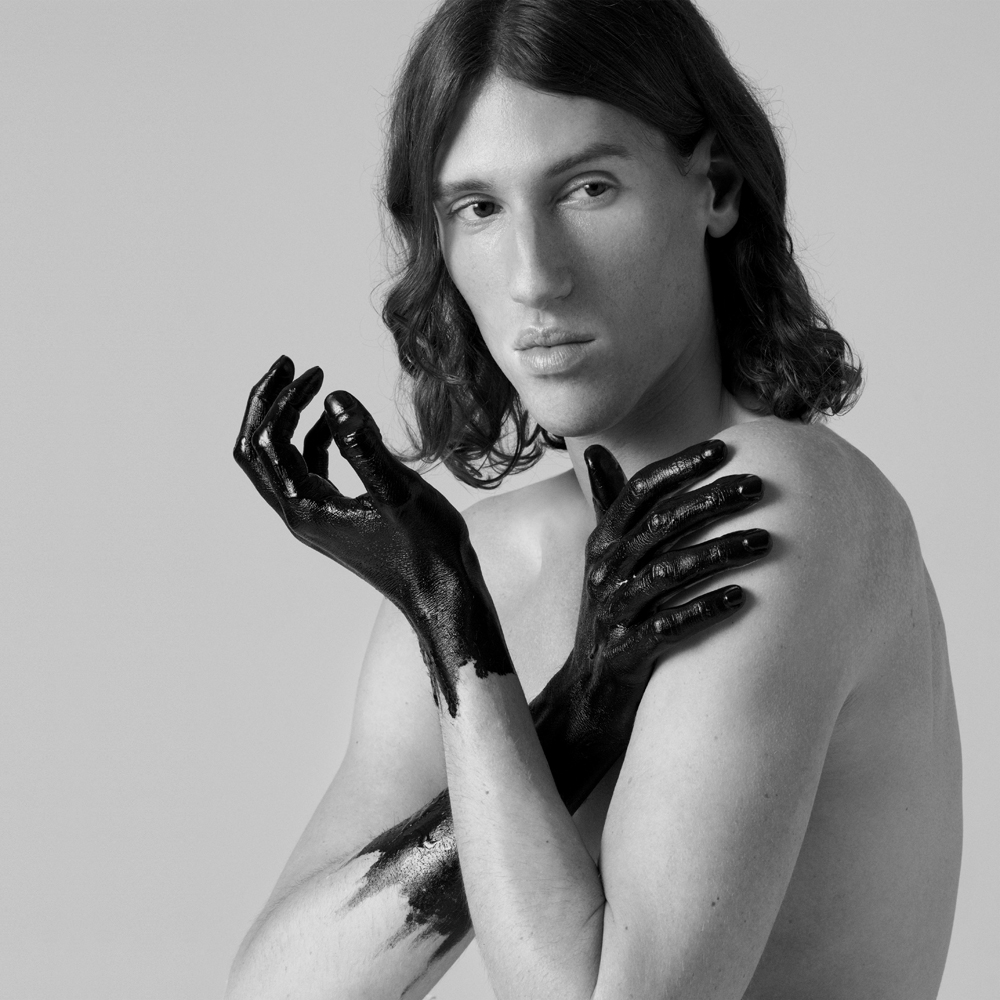
16
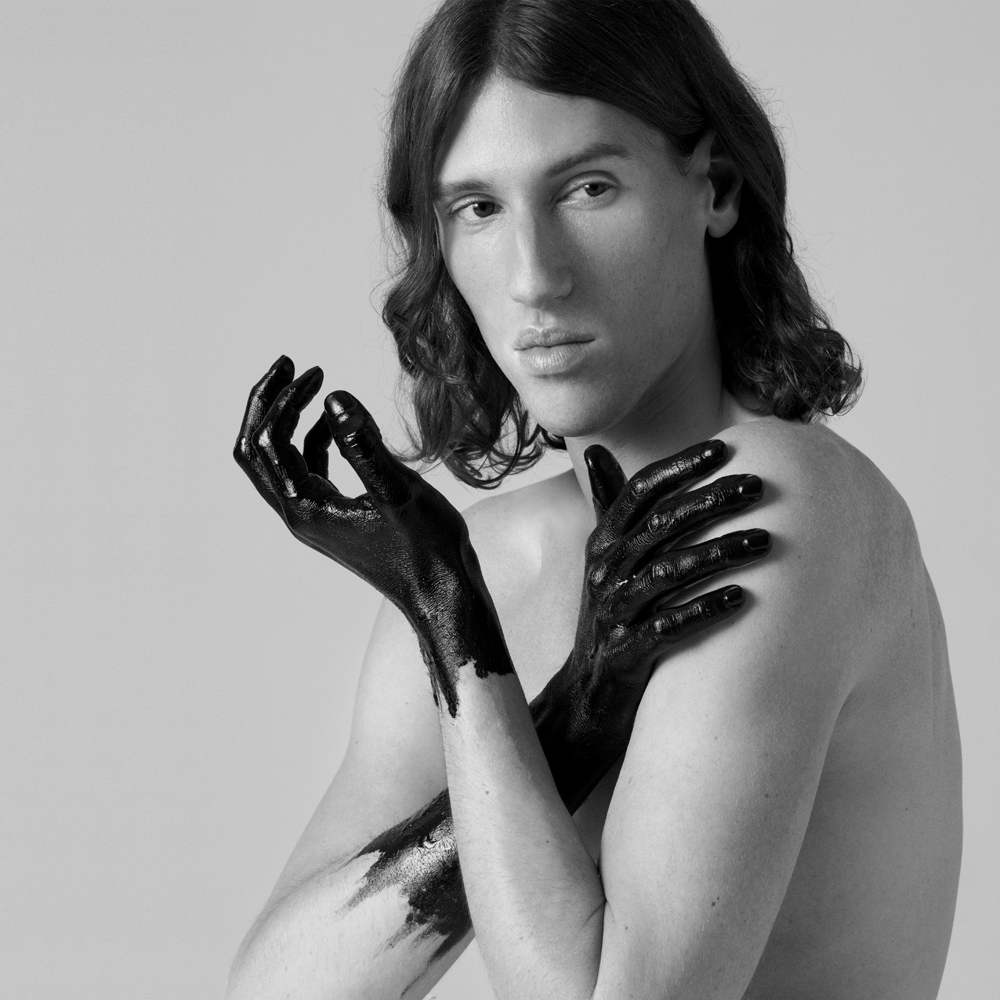
16
Meeting with designer Ludovic de Saint Sernin : “Nowadays, a man in a dress isn’t necessarily mocked”
In his mens- and womenswear collections, Ludovic de Saint Sernin designs body-conscious fashion that is teasingly and joyously revealing. Since starting his own label in 2017, the young Frenchman has been developing a new hedonism that subverts gender barriers in an unashamedly erotic way.
Portraits by Jean-Baptiste Mondino,
Interview by Delphine Roche.
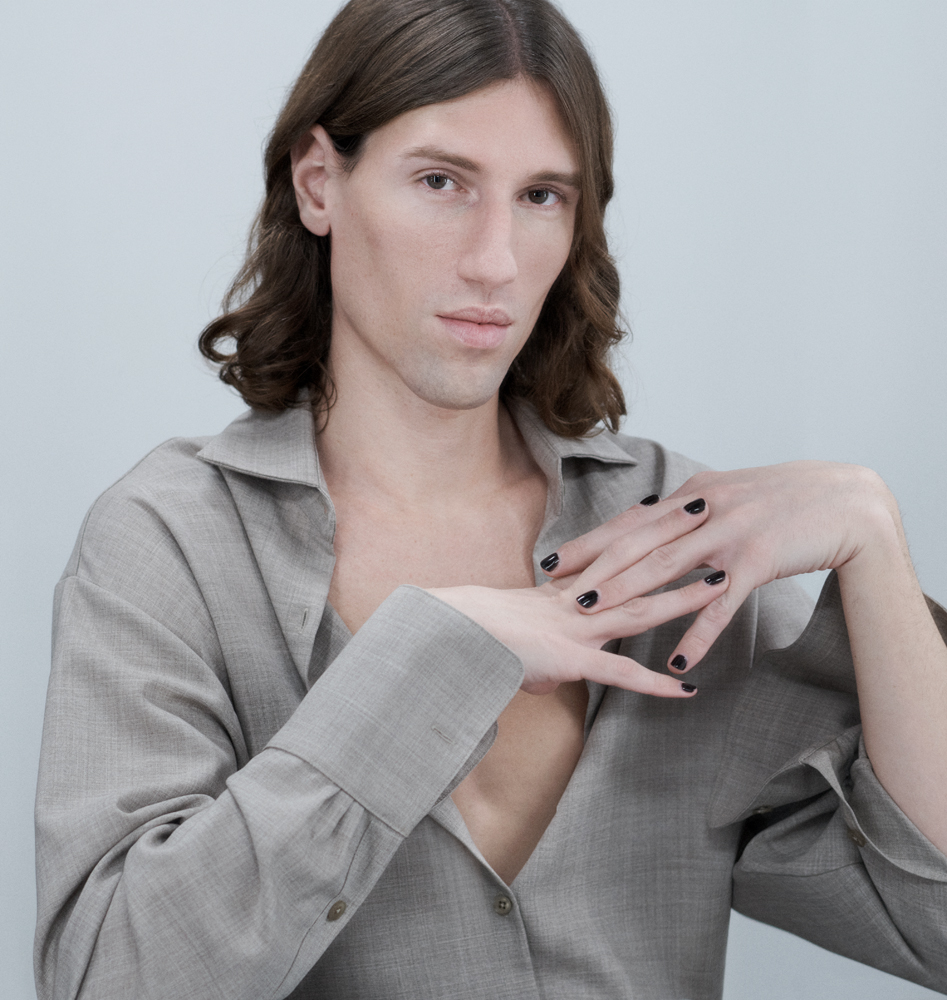
Numéro : What made you want to become a fashion designer?
Ludovic de Saint Sernin : As far back as I can remember, I’ve always wanted to do this job. Very young, as soon as I was able to, around three or four years old, I started to draw. Afterwards I took painting and sewing classes, all the while following a standard educational path, because my mother wanted to make sure I finished high school with good grades, in case I didn’t make it in the fashion industry. After taking my baccalaureate in literature, I started at the Duperré Applied Arts School, where I studied women’s ready-to-wear for four years. I was a huge fan of famous designers like Yves Saint Laurent, who created clothing for women, so the choice of womenswear seemed very natural to me.
And yet your output has a very homoerotic side to it. When you discovered sex – I’m imagining as an adolescent –, did it alter the way you saw fashion?
No, because at the time I was heterosexual: I liked and admired a lot of women. Because of the way I’d been brought up, I didn’t even question my sexual orientation. It was only once I went to college that I discovered other horizons, other ways of seeing life. Suddenly I was surrounded by people who were gender fluid, gay or lesbian and who were perfectly at ease with who they were and didn’t see it as an issue. But I continued to tell myself that I was a male fashion designer, and that, because Yves Saint Laurent designed clothes for the women he admired or was close to, I should do the same. I hadn’t ever thought about the role of sexuality with respect to clothing, or the role that a designer’s sexuality might play in the garments they design. That came much later. When I was about 23 or 24, I read Patti Smith’s book Just Kids, in which she recounts her love affair with Robert Mapplethorpe, a man who was as much in love with her as she was with him, but who in the end started to explore other horizons and realized that actually he preferred guys. It was a concrete example of a man who liked girls and who, later, liked boys, and it allowed me to free myself. When I launched my brand, I’d just started a relationship with a man, and the project evolved: I decided I wanted to make feminine clothing that would be worn by men, but without it being cross-dressing, or arch, or over the top. We did a runway show right at the start in men’s Fashion Week, but the idea was to allow men to appropriate women’s garments. Interestingly though, during that début season, we sold more clothes to women’s clothing shops than to men’s.
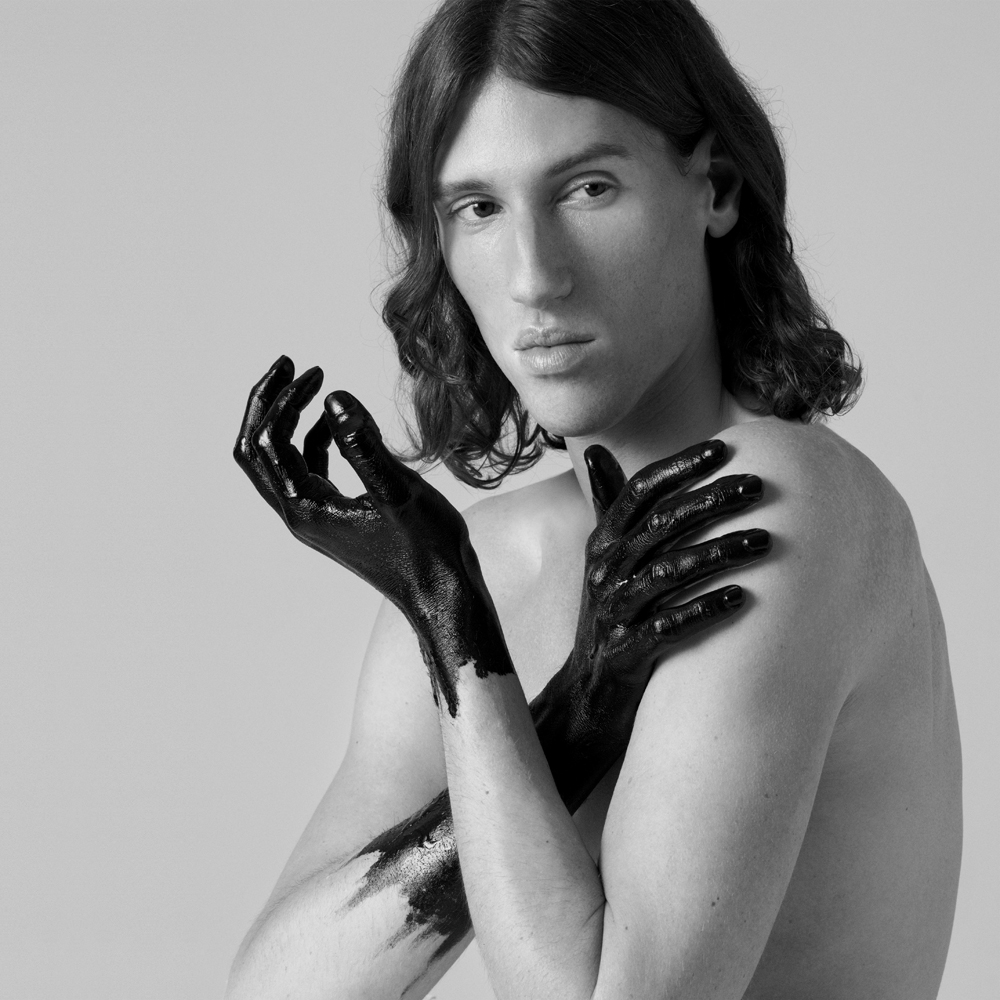
It didn’t take long after that first collection for you to become identified with your lace-up undergarment, which has since become your signature design. What’s your feeling about the huge success of this particular piece?
I felt that I was extremely lucky to have a piece from my very first collection that was destined to become an icon. The inspiration came, once again, from Mapplethorpe: in his photos of homoerotic BDSM there are knitted jockstraps and leather underwear. I designed the lace-up piece for my first collection in June 2017, but I showed it under a raincoat. The show was taking place in broad daylight, my family was going to attend, so I felt a bit inhibited. On Saint Valentine’s day 2018, it was finally brought out into the light of day. I made different examples of it in black leather, denim and red cot- ton, and a friend photographed it on a model at Chateau Marmont. After seeing the pictures, people soon became obsessed with this piece of luxury underwear. Just as Jean Paul Gaultier has his conical bra, I have the lace-up undergarment.
Mapplethorpe’s photos are rather dark, while the eroticism in your collections and publicity campaigns is eminently light and sunny.
Absolutely. It’s a way of seeing homoeroticism and sexuality that I think hasn’t really been explored much up till now. I evoke a certain type of freshness and happiness, and though there’s nothing dark about my images, that doesn’t mean they weren’t inspired by a scene you might call dark. It has to do with the limit between the public and private spheres, what you can reveal in broad daylight and what you might prefer to keep all to yourself. Mapplethorpe’s photos were considered very shocking in the 80s. I don’t show my undergarment in a provocative or militant way – my style is easier, and it can therefore appeal to a much wider audience.
“Just as Jean Paul Gaultier has his conical bra, I have the lace-up undergarment.”
Your ready-to-wear garments are very sexy in the way they highlight the body by being already slightly open, or asking to be opened, or appearing as though about to slip off the wearer…
Totally. It’s really become a trademark of the Ludovic de Saint Sernin brand. Sometimes the garment is just a bit of cloth – the brand’s entire aesthetic is to do with the body, how to dress and undress it. That’s why I love designing summer collections, but I also try to do it for winter clothes, imagining the cold season in LA rather than in Paris. I like lacing, and the half undressed. That was the starting point, but since I wear my pieces every day I realize that it’s important for them to be functional. So I’m trying to mix the practical and the fantasy aspects and make the two work together.
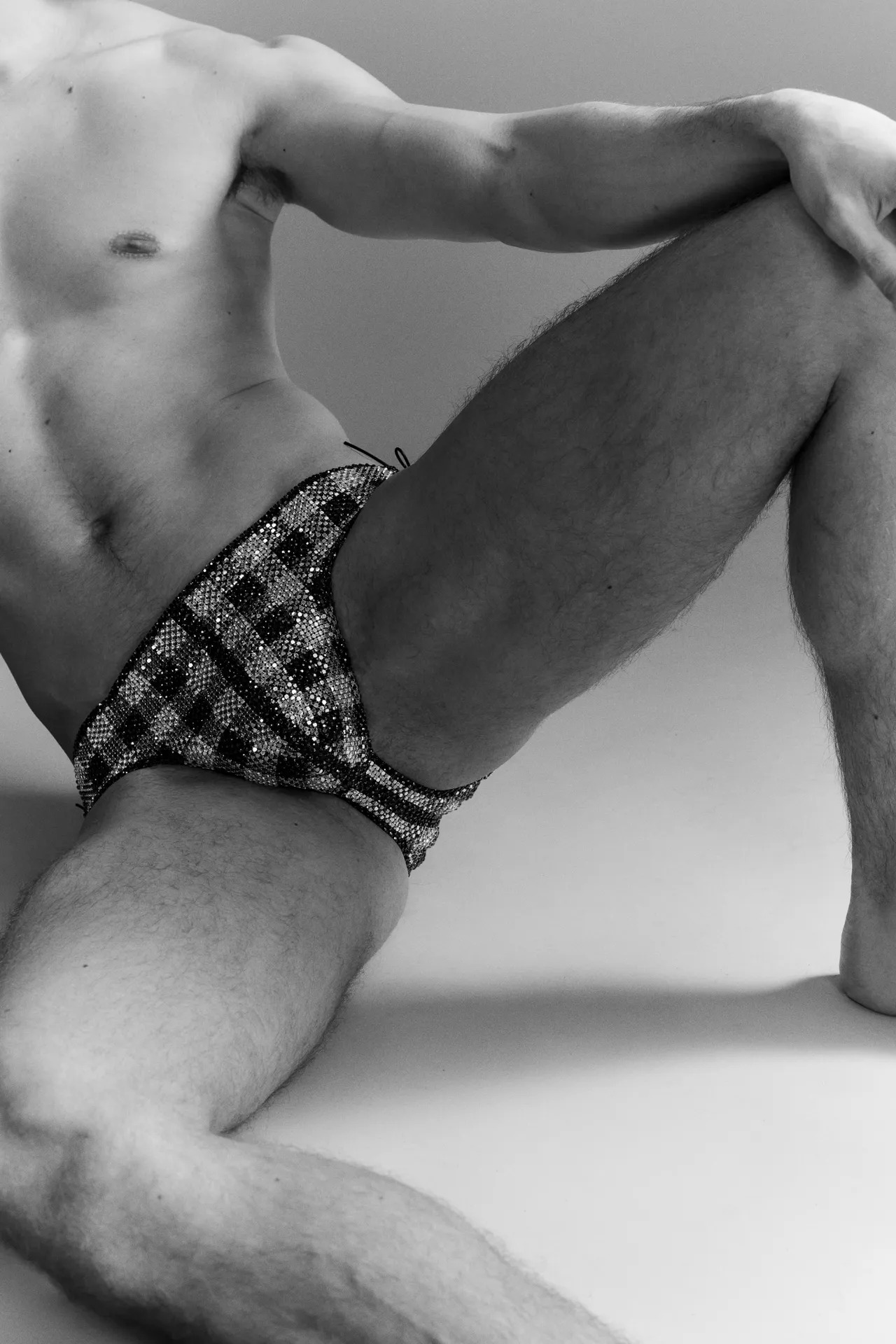
Some of your pieces show less of the body, and instead exhibit a sensuality of materials in natural or pastel colours.
My colour palette is indeed very soft and natural, it resonates with fabrics that can be worn next to the skin, like cashmere. It’s part of the Ludovic de Saint Sernin DNA.
You’re putting forward a new kind of male beauty: a man who takes care of his body, who’s not afraid to show it off as an erotic object, but who doesn’t subscribe to the usual codes of virility.
In many ways my brand is inspired by my life – there’s a lot of autobiography in there. My first collection was about a coming out and a coming of age. That resonated with a lot of boys, but also with girls or people who felt gender fluid. Today you have more impact if you tell your own story rather than adopting an external theme. It allows people who are going through something similar to be reassured. It’s an aspect of my work that I find very exciting, because there’s both a social and a political side to it. I don’t necessarily want to politicize my clothing, but it is nonetheless the vehicle for certain messages and values that turn it into a political object. The boy in the advertising campaigns is just like me, he doesn’t ask himself if it’s masculine to show oneself in such and such a way, he just presents himself as he is, but as the best version of himself. He doesn’t try to transform the way he is according to society’s diktats, but instead follows his own instinct and is just himself.

On female models you tend to show types of garment that are traditionally considered to be womenswear, for example your short corsets with rather thin straps.
As a teenager I was a fan of Britney Spears and Mary-Kate and Ashley Olsen… I loved what they wore. I used to design women’s clothing like that, but I never thought I could wear those pieces myself. So now I guess I’m making my adolescent dreams come true by wearing the clothes of girls that I admired at the time. That’s why I’m a fan of designers like Azzedine Alaïa, who exalted the female body like no one else… I’m trying to do a similar thing for the male body in a way that’s never been seen before. During my three years working at Balmain, I was close to a girl who was exactly the same size as me. We had a very similar body type. We used to swap clothes a lot, which greatly marked me, because I realized that she could wear my entire wardrobe and vice versa without our appearing ridiculous. Nowadays, a man in a dress isn’t necessarily mocked, it’s become far more acceptable. I’m glad to see that things have become more fluid, but that doesn’t mean to say I’m not glad that there’s clothing for men who are masculine and for women who are feminine. Today, there’s something for everyone.
“I’m not looking to provoke or be militant, I just think we should try to get rid of our taboos.”
You also appear in your brand’s promotional imagery, on Instagram and in publicity campaigns. Is it important for you to be the incarnation of the label?
It happened organically, because on the personal Instagram account I was running at the time of the brand’s launch, I posted photos of both myself and my designs. I’ve always thought that if I don’t wear the clothes I design, how can I sell them to someone else? For my generation of designers it seems perfectly normal to be the incarnation of the brand. Rick Owens and Donatella Versace already did it. What’s new, with Instagram, is that it reaches a much wider audience. Where the spring/summer 2021 swimwear campaign is concerned, which was shot by Willy Vanderperre and for which I modelled, things again happened organically. Just when shooting was scheduled to start, the pandemic set in, and Willy thought it would be better if I modelled the clothes myself rather than having a professional model travel to the shoot if we could avoid it. Moreover, the collection referred to my breakup with my boyfriend, and there was no one who was better able to represent that than me.
Sexuality is important in your brand image, and for Saint Valentine’s day in 2019 you released a sex toy designed with the Japanese brand Tenga. Is this something you might develop further?
That collaboration came about when I was doing my second collection, which was inspired by Surrealism. It just so happens that the Surrealists were crazy about eggs, so I put a sort of eggcup on a model’s shoulder, which was melting like Dalí’s watches, and had an egg inside it. Then someone told me about a Japanese brand of sex toys that makes eggs for male masturbation. I met up with the company, and they were very enthusiastic about the idea of collaborating. The result was an egg branded LDSS. I haven’t designed any more sex toys, but I did collaborate with Pornhub for spring 2022, designing T-shirts, singlets and hoodies, the idea being to say that sexuality is part of everyone’s life. Our times make that very visible, but the more visible it is the more it’s censured. I think that evoking sexuality has always been a part of fashion. Rick Owens made goatskin cock rings, if I’m not mistaken. Anyway, I’m not looking to provoke or be militant, I just think we should try to get rid of our taboos.
www.ludovicdesaintsernin.com













